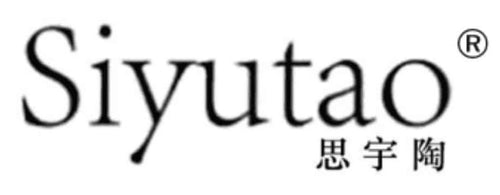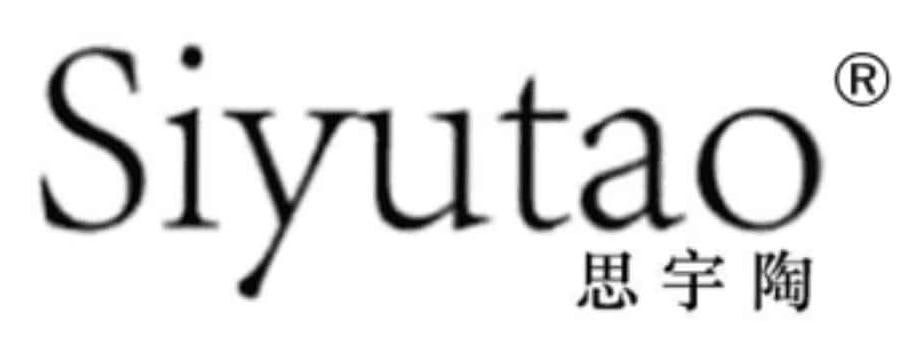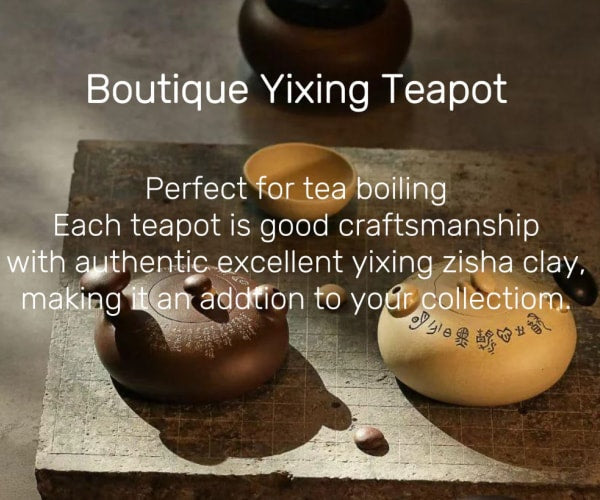Laughing Cherry Blossom Teapot (Xiao Ying Teapot)
The Laughing Cherry Blossom teapot (笑樱壶, Xiaoying Hu) originated in the Ming Dynasty and remains one of the most iconic shapes in Yixing zisha teapot history. Widely beloved for its bold, dynamic form, the teapot exudes a sense of sturdy resilience—an unyielding, almost heroic character. Connoisseurs often describe its tea-brewing qualities with fervor: "Beneath its cool exterior lies a passionate heart. It brews tea with fiery enthusiasm, yielding a rich, robust liquor—sweet, warm, and vibrant. Decisive and bold, it is truly the hero among teapots."

From Wine Vessel to Teapot: The Evolution of a Name
During the Song Dynasty, yingping (罂瓶), or "jar bottles," were used by scholars and literati as wine vessels. By the Ming Dynasty, the master potter Xu Youquan adapted the yingping form into a zisha teapot. However, since the teapot was much smaller than the original wine jar, it came to be called the "Little Jar Teapot" (Xiaoying Hu 小罂壶). Over time, as more potters replicated the design, the name underwent a linguistic shift. The term ying (罂, "jar") was complex to write, and through oral transmission, the name gradually morphed into Xiaoying Hu (小英壶, "Little Hero Teapot").

A Master’s Intervention: The Birth of a Legend
Centuries later, Pan Chunfang, a distinguished apprentice of the revered potter Gu Jingzhou, redesigned the Xiaoying Hu as his first major project after graduating. Coincidentally, an official from a ceramics company noticed the teapot and remarked, "The design is excellent, but the execution falls short. Let Gu Jingzhou refine it." Traditionally, master potters avoided modifying their disciples' work, but given the official’s request and collective persuasion, Gu Jingzhou reluctantly broke the rule.
When a master like Gu Jingzhou steps in, the result is nothing short of extraordinary. He refined Pan Chunfang’s design, elevating the Xiaoying Hu into an enduring masterpiece of zisha history.
How "Little Hero" Became "Laughing Cherry Blossom"
The renaming of the teapot remains a topic of debate, with three prevailing theories:
-
A Diplomatic Gesture
Around 1966, during the establishment of Sino-Japanese diplomatic relations, Premier Zhou Enlai sought to gift Yixing teapots to the Japanese Prime Minister. Among several options, the Xiaoying Hu was selected, but its name was deemed too plain. After consulting with Central Academy of Fine Arts professor Gao Zhuang and Gu Jingzhou, they noted that the teapot’s profile resembled a smiling woman. Given Japan’s reverence for cherry blossoms (sakura), they renamed it Xiaoying Hu (笑樱壶, "Laughing Cherry Blossom Teapot").

-
A Literary Inspiration
Another theory traces the name to Strange Tales from a Chinese Studio (Liaozhai Zhiyi), specifically the story of Yingning, whose laughter "dispelled a thousand sorrows." The phrase "harmony in diversity" (和而大同) embodied in Yingning’s tale resonated with the spirit of Sino-Japanese relations. The teapot’s harmonious blend of colors and forms mirrors this philosophy, symbolizing the Confucian ideal of "gentlemen seek harmony but not uniformity." Scholars interpret "harmony" (和) as a cultural principle representing peace, unity, and balance—qualities that align perfectly with zisha clay’s humble yet profound nature. -
An Artistic Upgrade
Some believe that later generations of potters found "Little Hero" too mundane. Given the teapot’s popularity, they poetically transformed "Xiao" (小, "little") into "Xiao" (笑, "laugh") and "Ying" (英, "hero") into "Ying" (樱, "cherry blossom"), adding a layer of literary elegance.
An Enduring Enigma
The true origins of the Laughing Cherry Blossom teapot remain one of zisha history’s charming mysteries. To this day, the debate continues—each theory adding to the allure of this timeless classic.



